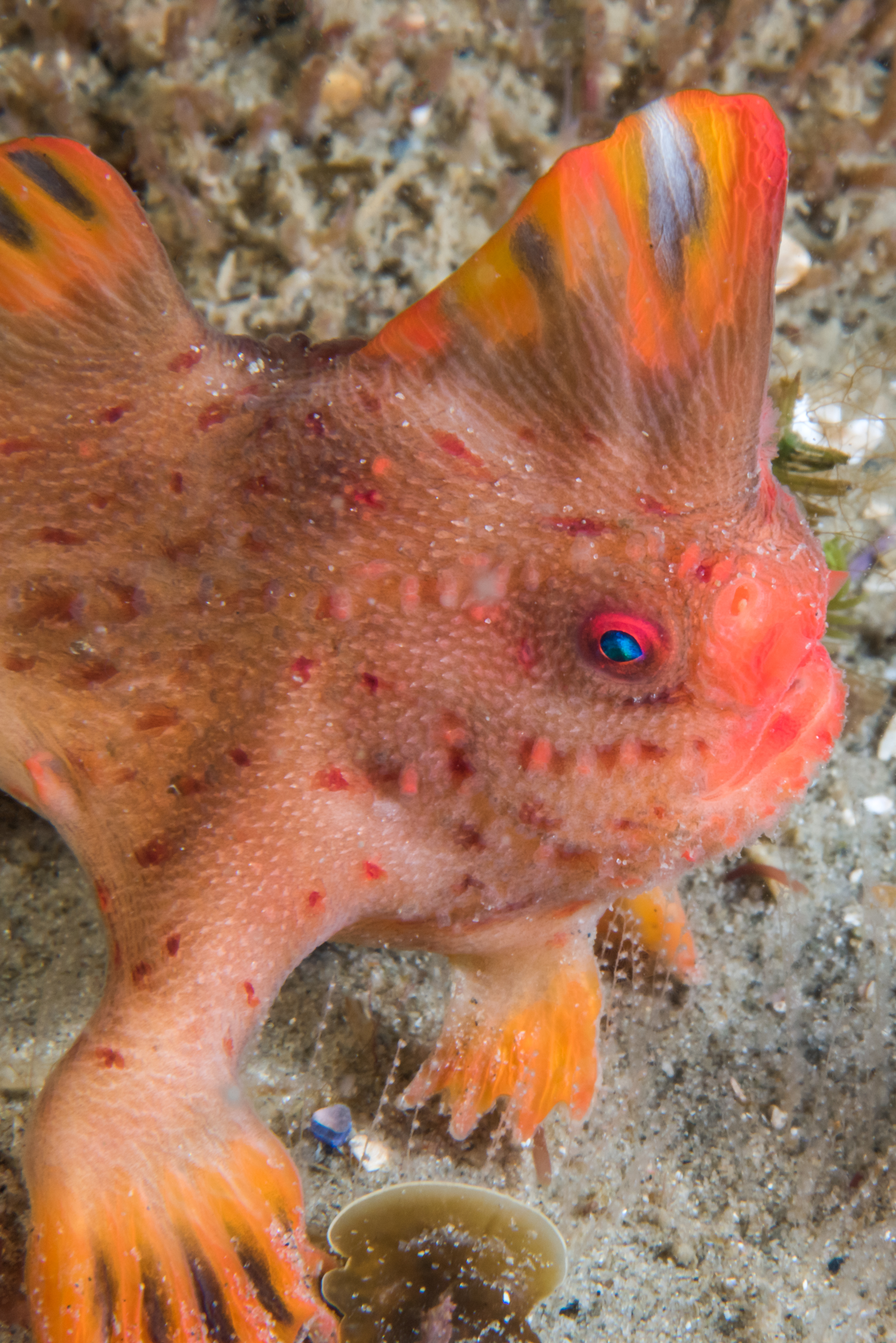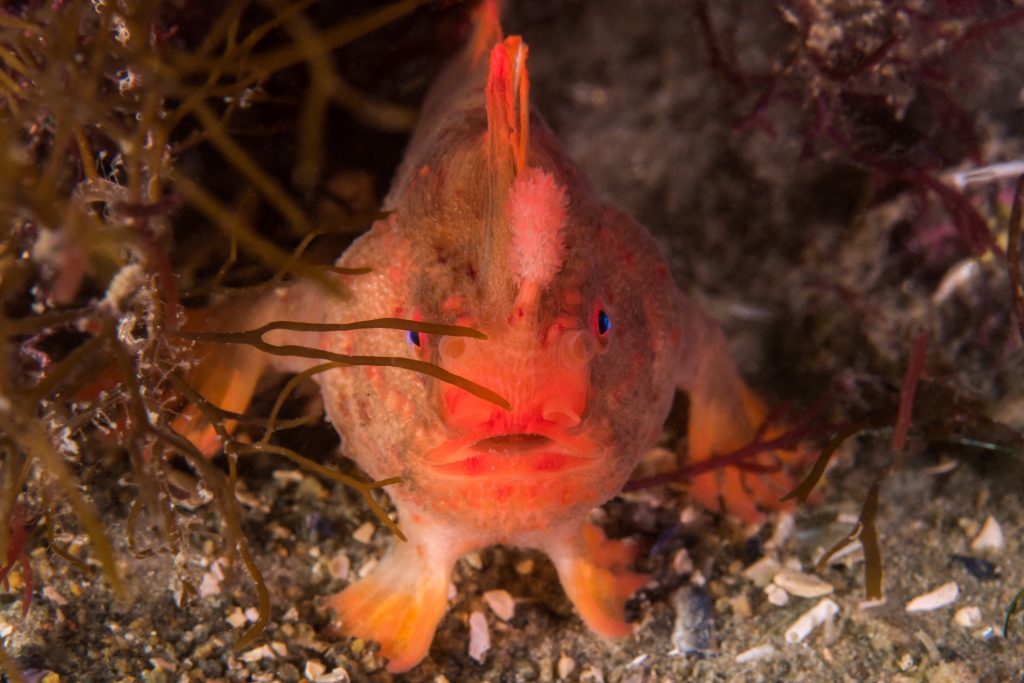Handfish walk with their “hands” rather than swim. They belong to a group of coastal anglerfish with a narrow distribution in southeastern Australia. There are 14 species with seven endemic to Tasmania and Bass Strait. Handfishes don’t have a planktonic stage, they lay eggs, and have parental care of eggs. This means that they can only recruit locally. Very little is known about handfish in general, but we do know that the Spotted, Red, and Ziebell’s handfish are critically endangered and are faced with increasing levels of habitat destruction and loss, pollution, and changing climate.
The Spotted handfish (Brachionichthys hirsutus) were once common in the Derwent but experienced a severe decline in the 1980s. In 1996 they became the first marine fish to be listed as Critically Endangered by the IUCN Red List of Threatened Species. They are also listed as Critically Endangered under the Commonwealth Environment Protection and Biodiversity Conservation Act 1999 and Endangered under Tasmania’s Threatened Species Protection Act 1995. Recent surveys have documented local populations at nine small sites in the Derwent Estuary, and in 2015 an additional population was discovered in the D’Entrecasteaux Channel. Unfortunately, introduced North Pacific seastars have degraded natural spawning habitat and chains from yacht swing-moorings have destroyed habitats in sheltered bays. As a temperate coastal species on the southern tip of a continent, global warming may also be a major threat.
The Red Handfish (Thymichthys politus) is potentially one of the most endangered fish on the planet. It is possible that there are as few as 70 individuals remaining, found only on two small patches of rocky reef, each less than 50 m in diameter. Adults live hidden under the seaweed, and are incredibly hard to find. They vary in colour from bright-red to light pink/ brown and are typically less than 10cm in length. Habitat loss and destruction, pollution and urban developments are the main threats to the recovery of the Red handfish population. The photos of Red Handfish in this article are taken by Rick Stuart-Smith, Reef Life Survey.
The Ziebell’s Handfish (Brachiopsilus ziebelli) has not been seen in over a decade. This large pink/white handfish is only known from the southern parts of the D’Entrecasteaux Channel, Cox Bight in south-west Tasmania, and the Forestier and Tasman Peninsulas, and off Bicheno, eastern Tasmania. It has purple to brownish irregular blotches on the upper surface and sides of its body with bright yellow fins, and sometimes the yellow extends onto the body near the fins. They grow to a maximum length of 15cm.
The Red Handfish is on the brink of extinction & the Ziebell’s Handfish may already be extinct. Please see www.handfish.org.au to donate and share the link on Facebook.

Photos taken by Rick Stuart-Smith, Reef Life Survey
